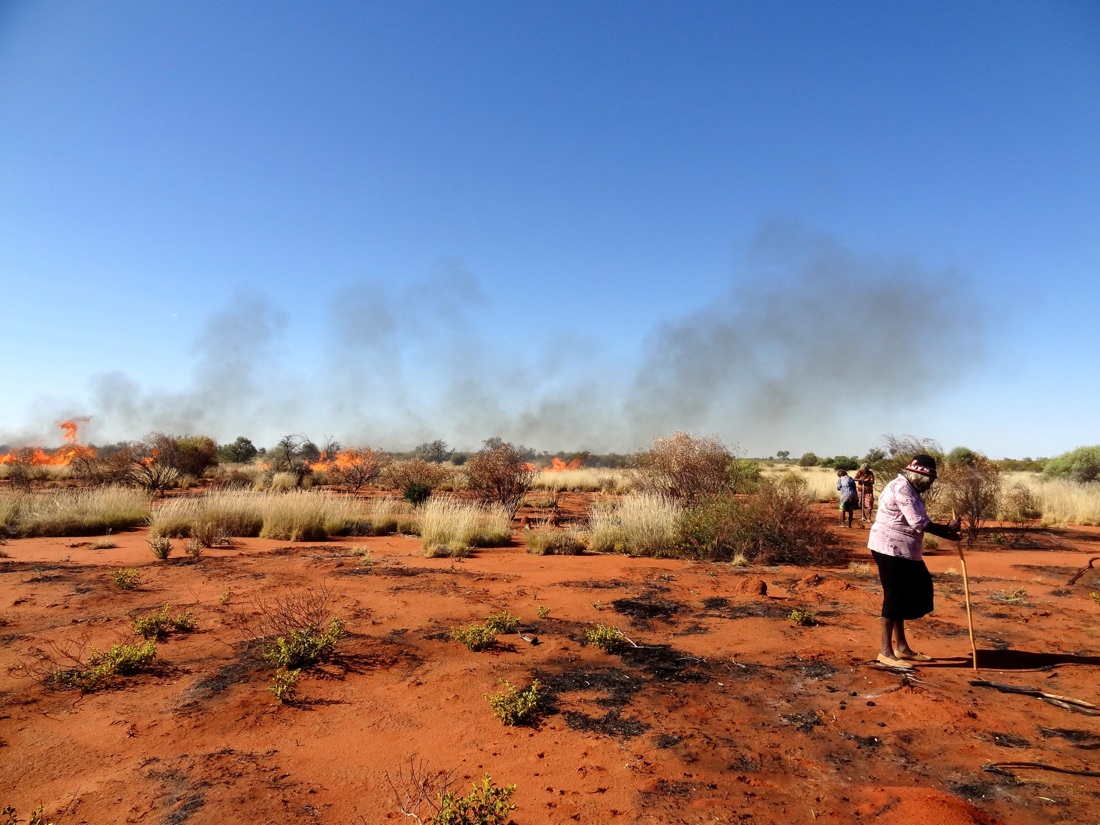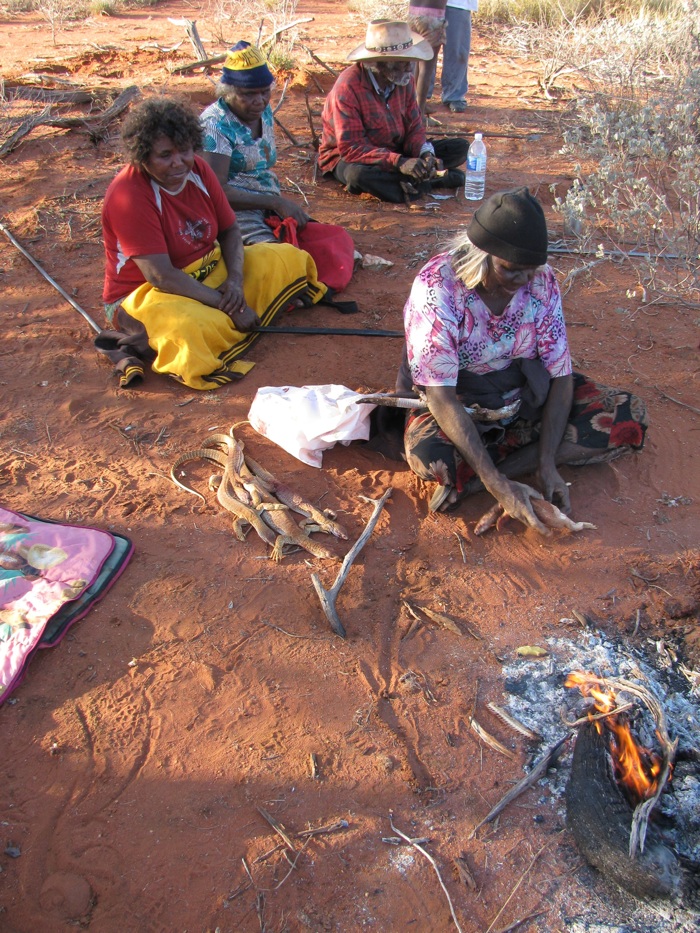Australian Lizards Thrive When Humans Hunt Them

Updated on Oct. 24 at 9:55 a.m. ET.
Hunters are often thought of as bad for wildlife, but scientists have recently found that Aboriginal hunters in Australia actually boosted certain lizard populations by improving the locales where the reptiles live.
Scientists investigated the Western Desert of Australia, where many native species have declined or gone extinct in the past century. But paradoxically, numbers of the sand monitor lizard (Varanus gouldii) — reptiles that weigh about 1 lb. (0.45 kilograms) and feed on smaller lizards, insects and arachnids — are higher where Aboriginal hunting is most prevalent.
Researchers investigated the Martu, an Aboriginal group that lives in the Little Sandy Desert in western Australia. The Martu use fires to clear off patches of older-growth vegetation to aid in searching for and tracking game — such as sand monitor lizards and other reptiles, as well as small mammals — from their burrows. [Photos: The 10 Biggest Deserts on Earth]
More than half of the time the Martu spend foraging is devoted to hunting sand monitor lizards. The investigators followed the Martu people on about 350 foraging trips over the course of about a decade.
"It is a vast, vast desert and a very severe environment, where you have a suite of the most poisonous snakes in the world— but with Martu, it's a very welcoming one," said study author Doug Bird, an ecological anthropologist at Stanford University in California. "If you don't know what you're doing, and if you're not with folks who know how to really handle themselves out there, it would be a very, very difficult place — but it's also incredibly beautiful."
The scientists found that the fires the Martu set eventually created small patches of regrowth, thus increasing the diversity of the landscape. The more diverse landscape, in turn, was able to accommodate a wider variety of wildlife, leading to greater biodiversity and more stable populations.
Get the world’s most fascinating discoveries delivered straight to your inbox.
"It's a counterintuitive result: The more Martu hunt, the more prey there are to hunt," Bird told LiveScience. "It flies in the face of a lot of common ways of thinking about the role of people in ecosystems."
In places where Martu hunting was the heaviest, there were nearly twice as many lizard sites as there were where Martu hunting was the lightest. In places where there were no hunters, lightning-triggered fires spread over vast distances instead of the relatively small patches resulting from Martu burning. This made the landscape less patchy and sand monitor lizards less prevalent.
The investigators noted that Aboriginal hunters have inhabited the arid desert grasslands that cover much of Australia for at least the past 36,000 years, so the hunters may have become key parts of the ecosystems there over the course of millennia. The researchers suggested that the loss of Aboriginal fire-based hunting in the mid-20th century may have contributed to the extinction of 10 to 20 native desert animal species and the sharp decline of more than 40 others.
"Martu insist that they don't manage or control their landscapes, but that they're fundamentally a part of those ecosystems," Bird said.
"There's a lesson here of the importance of these remote indigenous communitieswhen it comes to the role they play in maintaining healthy ecosystems and the way in which ecosystems support remote communities," Bird added. "That's really not at all recognized in economic or educational policy throughout Australia, where things like foraging are generally seen as a deficient way of making a living, so remote Aboriginals are often cast as being unproductive and unemployed. It turns out the work Martu do provides tremendous public goods in the form of supporting the health of a vast tract of landscape in the Western Desert of Australia."
The scientists detail their findings online Oct. 23 in the journal Proceedings of the Royal Society B: Biological Sciences.
Follow us @livescience, Facebook & Google+. Original article on LiveScience.
Editor's Note: This article was updated to correct a statement about how the Martu used fire; rather than using it to flush out prey, they used it to clear older growth vegetation to aid in hunting.




